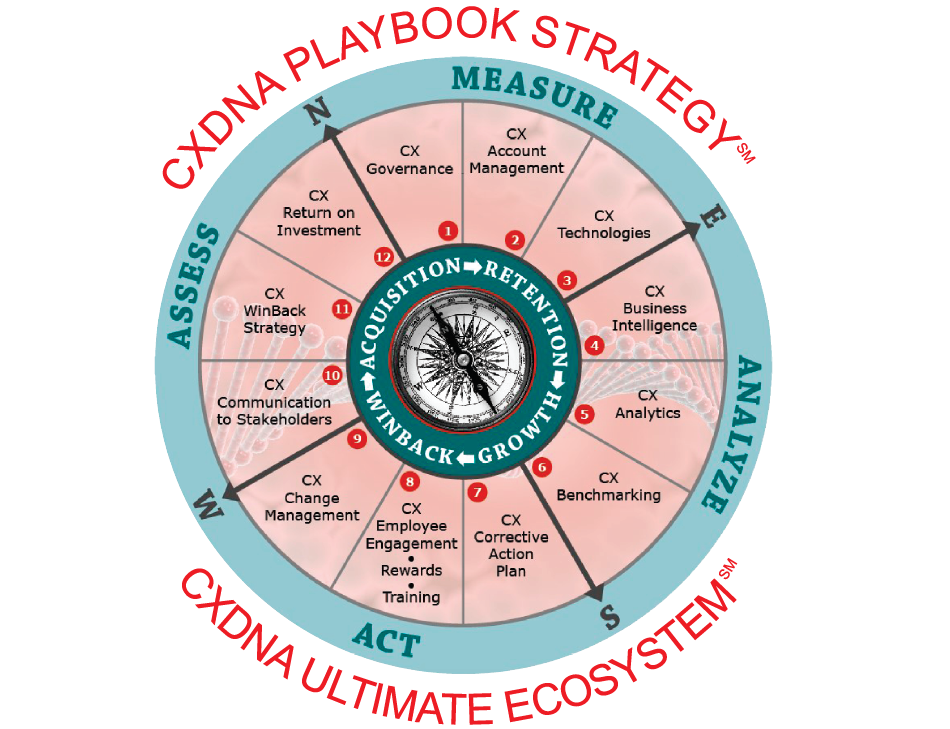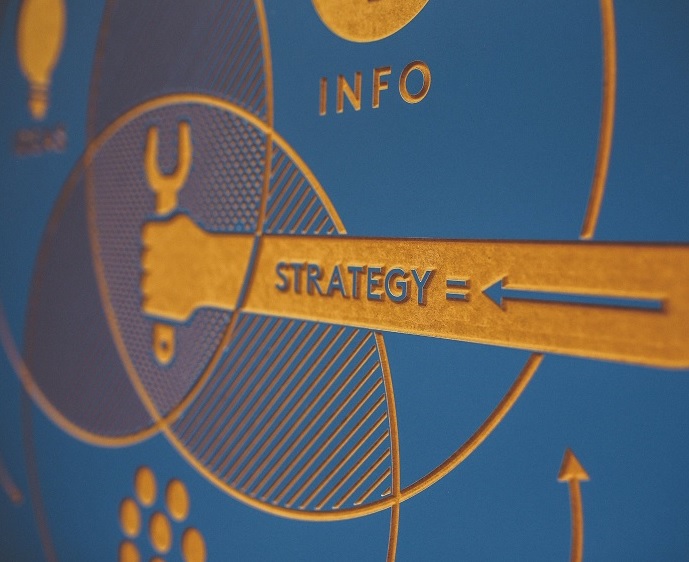CRMI Salutes Companies Fighting Spread of Coronavirus
NorthFace ScoreBoard Award℠ (NFSB) Certificates issued to companies
that have performed extraordinarily in the fight against COVID-19
by Bill Bradley
VP Marketing, CXDNA Stakeholder Communications
The Customer Relationship Management Institute LLC (CRMI), an independent third party and an expert in the field of CX (customer experience), has announced a special honorary certification – the NFSB COVID-19 Service Certificate – to recognize companies and their supply chain partners that have been acknowledged by President Trump’s COVID-19 Task Force and/or Forbes Magazine for exceptional service in helping to defeat the coronavirus.
“It’s inconceivable how much our world has changed since March 2020 with the onset of the COVID-19 pandemic,” said John Maraganis, president & CEO of CRMI. “Scores of companies have either stepped up their traditional work in life sciences and related fields to focus on the pandemic or retooled their businesses to focus on this global challenge. We felt it was important to salute these firms with an honorary COVID-19 NFSB Service Certificate and to provide the opportunity to earn recognition for achieving world-class customer service-” based on their actual CSAT survey results.
All companies engaged in fighting COVID-19, and their supply chain partners, shall receive a NFSB COVID-19 Service Certificate confirming their voluntary contribution to fighting the virus. They may also apply for the NFSB Award for customer service excellence and receive a special COVID-19 NFSB discount.
Now in its 20th year, the NorthFace ScoreBoard Award is presented annually to companies who, as rated solely by their own customers, achieved excellence in customer service during a full calendar year. Further, all NFSB recipients who have met the criteria for five (5) consecutive years shall receive special SUMMIT category – status denoted on their award and in their NFSB certification letter/deliverables.

COVID-19 NFSB Honorary 2020 Recipients:
(View Forbes Grace Chung and Giacomo Tognini business tracker article)
Testing
| Abbott Laboratories | Carbon | Ipsum Diagnostics |
| Alphabet | Cellex | Mammoth Biosciences |
| Amazon | Cepheid | Mesa Biotech |
| Aytu BioScience | Copan Diagnostics | Puritan Medical Products |
| Ava | Credo Diagnostics | QIAGEN |
| BioIQ | DiaSorin | Siemens Healthineers |
| BioMérieux | Henry Schein |
Treatments
| AbbVie | CytoDyn | Merck KGaA |
| AIM Immunotech | Eiger Biopharmaceuticals | Mesoblast |
| Aldeyra Therapeutics | Eli Lilly | Mylan |
| Alexion Pharmaceuticals | Emergent BioSolutions | OncoImmune |
| AlloVir | EUSA Pharma | Panoptes Pharma |
| Amgen | Faron Pharmaceuticals | Partner Therapeutics |
| Ampio Pharmaceuticals | Fujifilm | Pfizer |
| Apeiron Biologics | Gilead | PharmaMar |
| Apeptico | Green Cross | Pluristem Therapeutics |
| Applied Therapeutics | Grifols | Pulmotect |
| ARMS Pharmaceutical | Harbour BioMed | Regeneron Pharmaceuticals |
| Ascletis | Hope Biosciences | Relief Therapeutics |
| AstraZeneca | Humanigen | Ridgeback Therapeutics |
| Bausch Health | I-Mab Biopharma | Roche |
| BeiGene | Incyte | Roivant Sciences |
| Belleron Therapeutics | InflaRx | Synairgen |
| Biohaven Pharmaceuticals | Innovation Pharmaceuticals | Takeda |
| CalciMedica | ISR Immune System Regulation | Teva Pharmaceuticals |
| Can-Fite | Kamada | Union Therapeutics |
| Capricor Therapeutics | Karyopharm Therapeutics | Vault Health |
| Celltrion | KD Pharma Group | Vir Biotechnology |
| Celularity | Kiniksa Pharmaceuticals | XBiotech |
| Cocrystal Pharma | Laurent Pharmaceuticals | Zhejiang Hisun Pharmaceuticals |
| CSL Behring | Livongo | Mateon Therapeutics |
Vaccines:
| Advent-Irbm | ExpreS2ion | Moderna |
| AJ Vaccines | FluGen | Novavax |
| Altimmune | GeneOne Life Science | Sanofi |
| Arcturus Therapeutics | GeoVax | Sinovac Biotech |
| Biocad | GlaxoSmithKline | SK Group |
| BioNTech | Greffex | Sorrento Therapeutics |
| CanSino Biologics | Heat Biologics | Takis Biotech |
| Cel-Sci Corp. | Hoth Therapeutics | Themis Bioscience |
| Codagenix | iBio | Tonix Pharmaceuticals |
| CureVac | IMV | Vaxart |
| Dyadic | Inovio | Vaxil |
| Dynavax | Johnson & Johnson | Vaxine Pty Ltd |
| EpiVax | Medicago | VBI Vaccines |
Protective Equipment and Sanitizer:
| Anheuser-Busch InBev | Dickies | |
| Ansell | ExxonMobil | Menarini |
| Aria Designs | Fanatics | Miroglio Group |
| Armani | Fiat Chrysler Automobiles | O.C. Tanner |
| Bacardi | Fippi | Pernod Ricard |
| Barbour | GelPro | Prada |
| Bauer Hockey | Gojo Industries | Procter & Gamble |
| BrewDog | González Byass | Quicken Loans |
| Bulgari | GVS | Reliance Industries |
| Calzedonia Group | HP | San Miguel Corporation |
| Canada Goose | IKEA | Seamus Golf |
| Cantabria Labs | Ineos | Siemens |
| Charoen Popkhand Group | Jockey | Stanley Black & Decker |
| Colgate | L’Oréal | Starkey Hearing Technologies |
| Consomed | LVMH | Top Glove |
| Decathlon | Massaflex | Volkswagen |
| Diageo | Medline | Voodoo Manufacturing |
Ventilators and Beds:
| Airbus | Inspiration Healthcare | SIARE Engineering |
| BAE Systems | Mahindra Group | Smiths Group |
| Bloom Energy | Malvestio | SpaceX |
| BreathDirect | Medtronic | Tesla |
| Dyson | Meggitt | Thales Group |
| Ford | Penlon | Ultra Electronics |
| General Motors | Philips | Vyaire Medical |
| GKN Aerospace | ResMed | Xerox |
| Hill-Rom | Rolls-Royce |
Supporting Healthcare Workers and First Responders:
| Airbnb | First Due | NeuroFlow |
| Alibaba | GlobeKeeper | Palantir |
| Anaplan | GoPuff | Rave Mobile Safety |
| Apple | Headspace | Speetar |
| Byju’s | Hyundai | Tencent |
| Carbyne | Inditex | Uber |
| EverBlock Systems | Intel | UiPath |
| Manna Aero | Vista Land Group | |
| Faculty | Medallia | Zoom |
Asia:
| Asia Coatings | MetroResidences | Yili Group |
| Enterprises | Suncity Group |
Asia Private Sector:
| Ansell | GeneOne Life Science | Ping An |
| Ascletis | Green Cross | Seegene |
| Biolidics | HDFC Bank | Shiseido |
| CanSino Biologics | Healthmatch | Takeda |
| DBS Bank | I-Mab Biopharma | Yuchengco Group |
| Envision Group | JN Medsys | Zhejiang Hisun Pharmaceuticals |
| FPT Group | Mesoblast | |
| Fujifilm | Pan Brothers |
About CRMI:
Since 1999, the Customer Relationship Management Institute LLC (CRMI) has promoted that CX is the most critical component of company’s DNA. Further, that consistently exceeding customer expectations builds customer loyalty and requires competent-engaged employees. As a membership-based resource, we provide “One-Stop Shop” for “everything CX.” Whether you are new to CX strategies or a veteran practitioner, you will join thousands of like-minded professionals eager to share their CX experiences.
For more information on how to qualify for the NorthFace ScoreBoard Award, visit www.crmirewards.com or call (978) 710-3269 and ask for Diane Rivera, drivera@crmirewards.com.









 About the Author
About the Author



 About the Author:
About the Author: